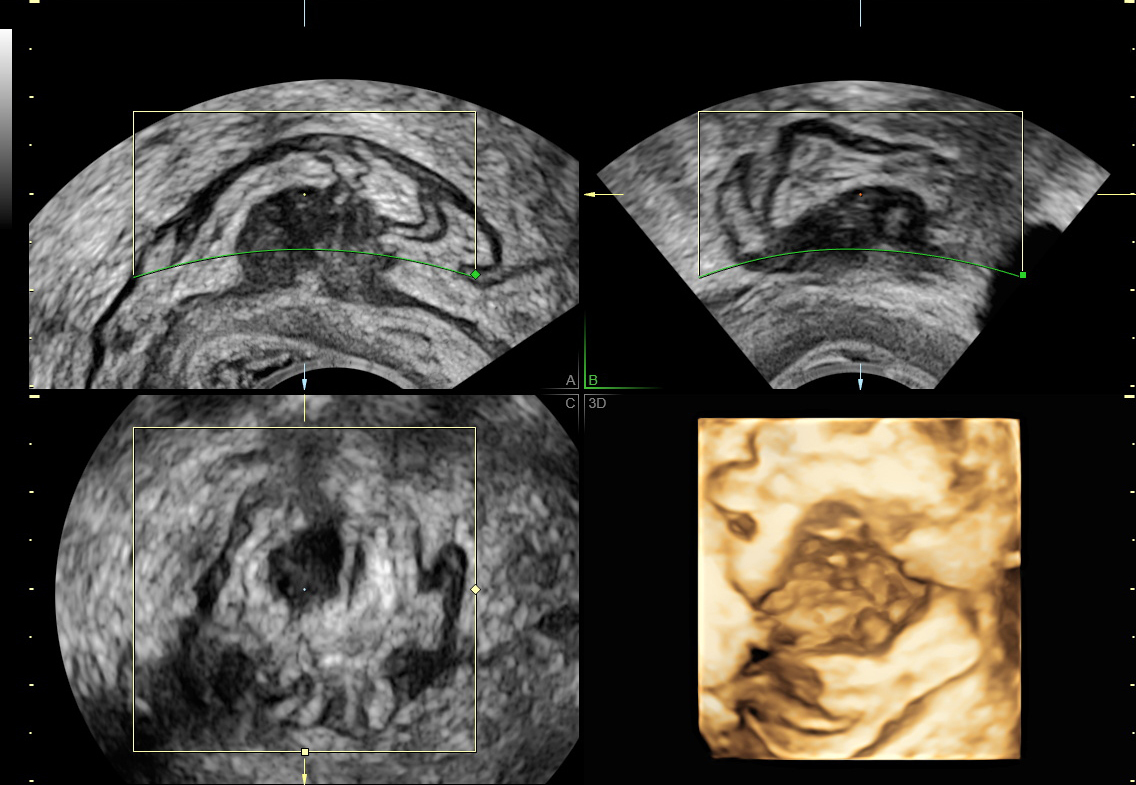Endometriosis, a disorder in which uterine tissue grows in other areas of the body, is a common source of pelvic pain for women in their 30s and 40s. An estimated 10 to 15 percent of women in America have the disorder. Approximately 1 to 5 percent of those women have deep infiltrating endometriosis (DIE), a more severe form wherein the tissue has spread deep within other organs or tissue (such as the urinary tract or bowel).
Transvaginal ultrasound is an essential step in diagnosing DIE and guiding surgical decisions. Transvaginal ultrasound is easier for patients, with no side effects or recovery time when compared to laparoscopy. While transvaginal ultrasound shouldn't replace laparoscopy, it can provide an inexpensive, less invasive and first-line option to evaluate pelvic pain symptoms and discover endometriosis.
The Effectiveness of 3D Ultrasound for Diagnosing Deep Infiltrating Endometriosis
As ultrasound technology has advanced, with clearer images and more accuracy, many studies have compared the results of transvaginal 3D ultrasound to laparoscopy for endometriosis. Research has confirmed that transvaginal ultrasound remains a good first-line option for diagnosing endometriosis.

Deep infiltrating endometriosis, rectosigmoid involvement (3D)
A study in Fertility and Sterility found that transvaginal ultrasound had a specificity of 85 percent for all sites of deep infiltrating endometriosis measured. In some cases, the sonographer needed to use different techniques, such as bladder site tenderness-guided ultrasound, for greater detection. Water-contrast transvaginal ultrasound was more effective for detecting rectosigmoid endometriosis. However, with operator training in how to read transvaginal ultrasound and the right technique, this ultrasound method is a reliable way to diagnose DIE.
False-positive results are rare with ultrasound, according to BMC Women's Health. Detection rates with ultrasound were similar to those with laparoscopy, and targeted, high-resolution ultrasound can accurately diagnose ovarian endometriosis. Ultrasound was most effective at diagnosing endometriosis in the ovaries, pouch of Douglas obliteration and bladder lesions.
Negative results are less dependable with ultrasound. Women with negative results and continued symptoms benefit from further analysis with laparoscopy.
Ultrasound and Laparoscopy Combined
Laparoscopy is still used to provide a definitive diagnosis of endometriosis, but ultrasound provides valuable information before surgery. Specifically, it is an inexpensive method to detect lesions and predict the complexity of the surgery.
Research published in Obstetrics & Gynecology found that ultrasound had a high level of accuracy in predicting the complexity of laparoscopic surgery for endometriosis. These results suggest that ultrasound can be used as a diagnostic tool or in helping triage patients for the appropriate surgical intervention for endometriosis. Before sending patients for an invasive procedure that can lead to time off work for recovery (and may potentially result in no endometriosis found during the laparoscopy), it's wise to gather the most information available so you know what to expect and what expertise will be needed.
Transvaginal ultrasound provides your patients with a less expensive, less invasive alternative to laparoscopy for first-line evaluation and diagnosis of deep infiltrating endometriosis.





